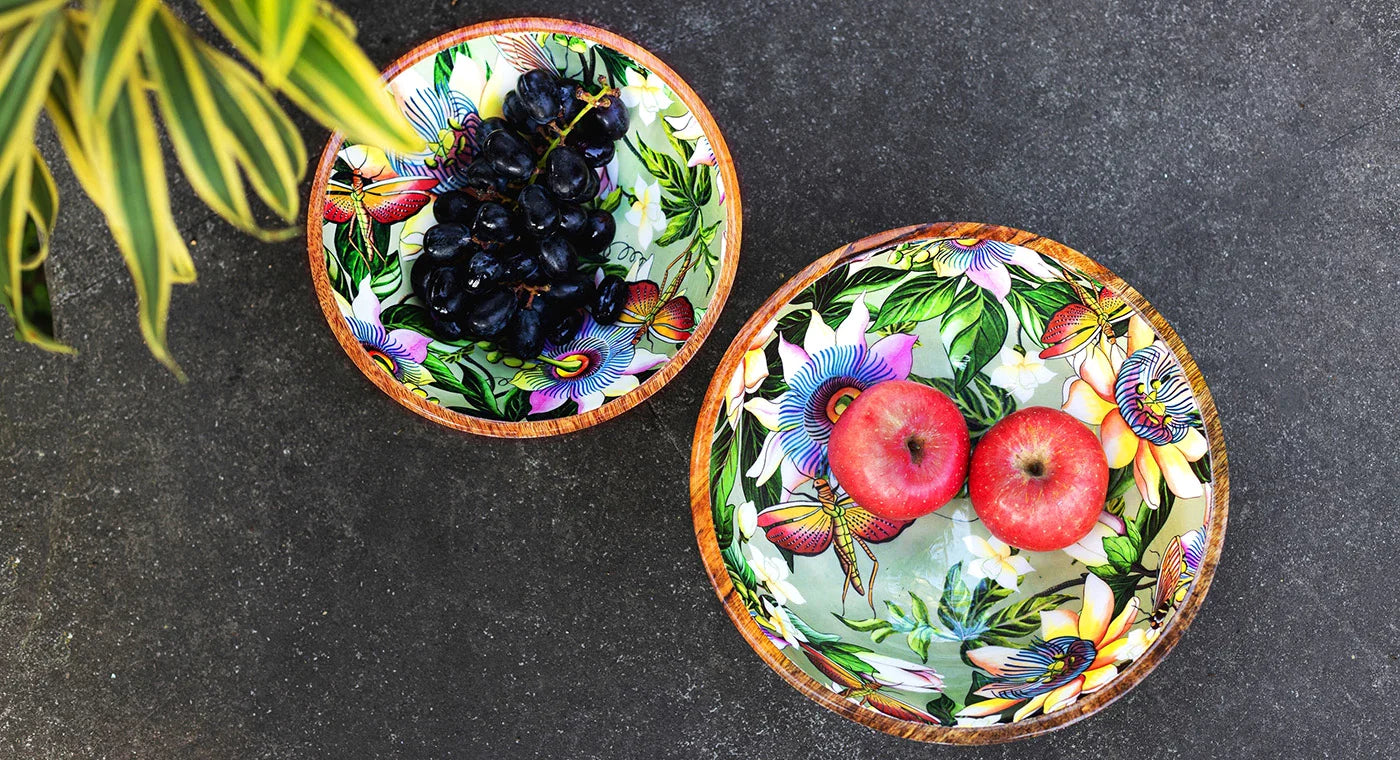How Heritage Bag Making Techniques Influence the Modern Handbag Artistry

An increasing number of people in the fast-paced world of fashion are appreciating the ageless artistic endeavor of traditional bag making techniques. As the industry shifts toward mass manufacturing and disposable trends, more consumers are recognizing the long-lasting value and beauty of traditional craftsmanship.
These centuries-old techniques not only conserve cultural traditions, but also add exceptional workmanship and authenticity to today’s creations. Every bag made with these techniques represents the history, culture, and talent that has been passed down over the years.
This has prompted modern designers to combine old techniques with cutting-edge design, producing handbags that pay tribute to their historical origins while still appealing to modern tastes—a flawless marriage of innovation and history.
Let's look at the interesting world of heritage bag making and its tremendous impact on contemporary fashion.

The Roots of Heritage Bag Making Techniques
Heritage bag making is an art form steeped in history, encompassing techniques that have been meticulously passed down through generations. Each method carries its own unique cultural significance and craftsmanship, reflecting the rich traditions of the communities from which they originate.
Historically, these techniques evolved to meet the practical needs of their time, utilizing locally sourced materials and tools that were readily available. This approach not only ensured the functionality and durability of the bags but also embedded them with a deep connection to the land and resources.
Over the years, what began as utilitarian objects designed for everyday use gradually transformed into symbols of culture and artistry. These bags became more than just functional items; they evolved into artistic expressions of identity and heritage.
The intricate hand-stitching, natural dyes, and traditional weaving patterns each tell a story of the people and places that created them, turning each piece into a living artifact of cultural history. This transformation underscores the profound impact of heritage bag making, highlighting its role in preserving and celebrating cultural narratives through the medium of exquisite craftsmanship.

The Rich History of Handbag Making
Handbag making is an ancient craft dating back thousands of years, evolving from the simple pouches used to carry coins in ancient times to the sophisticated and stylish bags we see today.
Traditional techniques such as leather tanning and intricate stitching have been meticulously passed down through generations, ensuring that the art of handbag making remains respected and revered. Leather tanning, an essential process for preparing hides for use, has been perfected over centuries, with each culture developing its unique methods to produce durable and beautiful leather.
Intricate stitching, often done by hand, showcases the incredible skill and precision of artisans, adding both strength and decorative elements to the bags. These age-old methods not only guarantee the durability and quality of each piece but also infuse each handbag with a unique touch of history and cultural heritage.
Each bag crafted using these techniques carries the legacy of the artisans who made them, embodying the traditions and stories of their communities. This rich heritage is evident in the careful selection of materials, the painstaking attention to detail, and the time-honored practices that go into creating each handbag.
Check out how Anuschka hand painted leather bags are made.
Material Used in Traditional Bag MakingHeritage bags thrive on the meticulous selection of natural materials such as leather and fabric each chosen for its durability and widespread availability. These materials not only promise sustainability but also age gracefully, imparting a unique character to the finished product.
The artistry lies not just in their practicality but in the careful understanding of their properties, ensuring a commitment to quality craftsmanship. As these materials evolve over time, developing a rich patina and individual charm, they elevate each bag into a timeless piece of artistry. This approach not only honors tradition and authenticity but also resonates with environmentally conscious consumers, forging a sustainable path forward in the world of fashion.

Classic Techniques in Heritage Bag Making
Hand-Stitching
Hand-stitching is a cornerstone of heritage bag making. Unlike machine stitching, hand-stitching requires meticulous attention to detail and a high level of skill. Each stitch is carefully placed, ensuring durability and a unique touch that machines simply can't replicate.
Leather Tanning
Traditional leather tanning processes involve natural tanning agents like tree bark and leaves. This method, known as vegetable tanning, produces leather that is not only durable but also eco-friendly. The resulting leather has a rich, deep color and a distinctive texture that sets it apart from chemically treated alternatives.
Weaving
Weaving techniques vary widely, reflecting the cultural diversity of bag making traditions. From intricate basket weaves to simple, sturdy patterns, weaving adds texture and visual interest to bags. Indigenous practices offer a wealth of knowledge and artistry in weaving techniques.
Cultural Influences on Bag Making Techniques
The beauty of heritage bag making lies in its diversity. Different regions boast distinct techniques and styles, influenced by local customs and resources. For example, Moroccan leatherwork features bold colors and geometric patterns, while Japanese bag making often emphasizes minimalism and precision. These cultural influences not only enhance the aesthetic appeal of bags but also tell a story of heritage and tradition.
The Artistry Behind Hand-Stitching
Hand-stitching is more than just a technique; it's an art form. The precision and skill required to create a flawlessly stitched bag are immense. Artisans spend years perfecting their craft, often starting as apprentices. The result is a product that exudes quality and craftsmanship, with each stitch reflecting the artisan's dedication.
Leather Tanning Processes
The choice between traditional and modern leather tanning methods significantly impacts the final product. Traditional vegetable tanning, while time-consuming, results in a more durable and aesthetically pleasing leather. Modern methods, which often use chemicals, may expedite the process but can compromise the leather's quality and environmental sustainability.
Weaving Techniques in Bag Making
Weaving is another integral technique in heritage bag making. Styles like plaiting, twining, and coiling are used to create bags that are both functional and beautiful. Indigenous weaving practices, such as those seen in African or Native American cultures, offer unique designs and methods that are being revived in contemporary bag making.
The Resurgence of Traditional Methods in Modern Times
In recent years, there has been a notable resurgence in the appreciation of traditional bag making methods. As consumers become more aware of sustainability and craftsmanship, there is a growing demand for handmade, artisanal products. This trend has encouraged modern brands to revive and incorporate heritage techniques into their collections, blending the old with the new.
The Role of Heritage Bag Making Techniques in Sustainability
One of the significant advantages of heritage bag making techniques is their sustainability. Traditional methods often use eco-friendly materials and processes, reducing the environmental impact. By focusing on quality and longevity, these techniques promote a more sustainable approach to fashion, countering the throwaway culture of fast fashion.
Consumer Demand for Authenticity
Today's consumers are increasingly seeking authenticity in their purchases. Handcrafted bags made using heritage techniques offer a unique appeal that mass-produced items cannot match. This demand for authenticity has driven a market shift towards high-quality, artisanal products, often resulting in higher market prices and greater appreciation for the artisan's work.
Challenges in Preserving Heritage Techniques
Despite their value, preserving heritage bag making techniques presents several challenges. As the world becomes more industrialized, fewer people are learning these traditional crafts. Economic and cultural barriers can also hinder the transmission of these skills to younger generations. However, initiatives and organizations dedicated to preserving these techniques are working to ensure they are not lost.
The Art of Hand Painted Leather
Hand painted leather is a unique aspect of traditional handbag making that has seen a resurgence in recent years. This technique involves skilled artisans painting intricate designs directly onto leather, transforming a simple handbag into a work of art. The result is a one-of-a-kind piece that stands out in a sea of mass-produced accessories.
Discover our guide on buying hand painted bags.

Anuschka: A Brand Rooted in Tradition
Anuschka, founded by Swapan Basu and his wife Roma in 1988, has evolved from a small family business into a global brand while maintaining a steadfast commitment to traditional techniques, particularly the art of hand-painting leather. This dedication is evident in their meticulous process, beginning with conceptualization where designers blend traditional motifs with contemporary elements.
High-quality leather is then carefully selected and shaped before skilled artisans painstakingly hand-paint each bag, layer by layer, ensuring its uniqueness. Craftsmanship lies at the heart of every Anuschka handbag, with artisans bringing a wealth of experience and skill to their work, resulting in products that are both beautiful and durable. Anuschka seamlessly blends tradition with modern design, drawing inspiration from nature, art, and culture to create timeless yet contemporary designs.
The unique appeal of hand painted leather handbags lies in their individuality, with each piece being a collector's item due to the craftsmanship and quality of the leather. In addition to their commitment to traditional techniques, Anuschka prioritizes sustainability and ethical practices, sourcing leather from reputable suppliers and ensuring fair working conditions for artisans.
Many customers have shared their stories of how Anuschka handbags have become treasured possessions, highlighting their significance beyond being mere accessories. Looking ahead, the future of hand painted handbags appears promising as more consumers seek unique, high-quality products, positioning brands like Anuschka at the forefront of this trend.

Conclusion
Heritage bag making techniques play a crucial role in shaping modern handbag artistry. By blending traditional methods with contemporary designs, artisans create unique, high-quality products that honor the past while embracing the future. Brands like Anuschka exemplify how heritage techniques can be preserved and celebrated in the modern fashion world. As consumers continue to value sustainability and authenticity, the influence of heritage techniques on modern handbag artistry is likely to grow, preserving these timeless crafts for generations to come.
FAQ
- What makes Anuschka handbags unique?
Anuschka handbags are unique due to their hand-painted designs. Each bag is painted by skilled artisans, ensuring that no two bags are exactly alike.
- How are Anuschka handbags made?
Anuschka handbags are made using high-quality leather. The process involves designing, cutting, and hand-painting the leather, followed by assembling the pieces into a finished bag.
- Are hand-painted leather handbags durable?
Yes, hand-painted leather handbags are durable. The painting process involves using special paints that are designed to adhere to the leather, ensuring that the artwork remains vibrant and intact over time.
- What is the significance of traditional techniques in handbag making?
Traditional techniques ensure the quality and durability of handbags. They also add a layer of history and craftsmanship that is often missing in mass-produced items.
- How does Anuschka ensure ethical practices?
Anuschka ensures ethical practices by sourcing leather from reputable suppliers and employing artisans under fair working conditions. The brand is committed to sustainability and ethical production.















